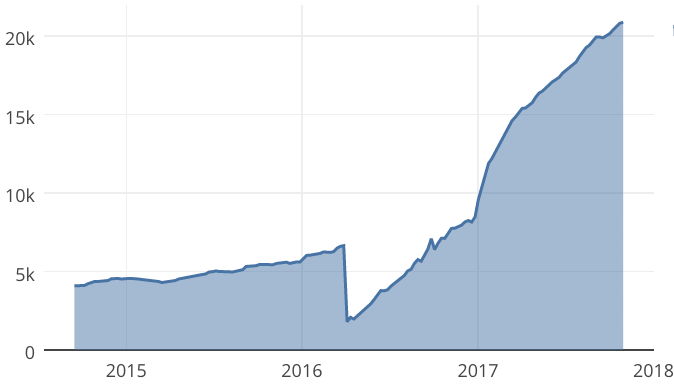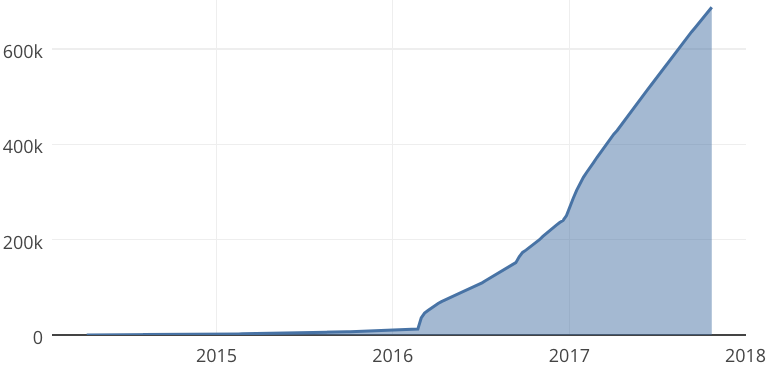A SaaS Pricing Story
It was April 4th, 2016, and our bootstrapped SaaS company, Mealime, was doing just fine, thank you very much. At $6,600 MRR and near-0 costs, it earned enough for its 3 founders, Jeff, Maria and me, to live off of. Sure, it was no monumental success. My “salary” was barely a 5th of what I would earn as a developer for another company. But that modest success meant something big to us: if the slow growth continued, we would never have to “work” again. In short, we had something to lose.
I was about to throw that away. My finger hovered over the enter key which would trigger a Hari Kari-esque script, dropping our MRR to $1790 (about a 4x drop) in an instant. We had debated this decision for weeks, but I still knew that this could easily be the death of our company.
Mealime is a meal planning app: A B2C SaaS company. At that time we had 426 customers paying about $16/mo to use our web app. We had just launched our mobile apps and had been debating our pricing strategy for the new platforms. We knew that our current price point was far higher than mobile users are accustomed to paying, even if we felt Mealime provided more than enough value to justify it. Instead, we decided on a radical shift in strategy: give the core product away for free, focus on building a great free experience, and hope that enough users will upgrade to our optional “premium” offering (which we reduced to a more mobile-friendly $4.20/mo). In short, we had decided to “go freemium” and reduce prices drastically.
We felt good about that choice. Our mission is to help working professionals eat healthily and save time, and we knew this change would let us help more people. No, the hard choice was what to do with our existing subscribers. They were our lifeblood, and we needed every cent of the $6,600 they paid us every month to cover our rents. At the same time, we knew that the “right” thing to do was to be totally upfront with them about the pricing drops and free offering. I’m a little ashamed to admit that I argued against this. I figured that we could keep our existing customers at the same rate, while charging substantially less on mobile, and conveniently neglect to tell them that they could be paying ¼ of the price, or even $0 for the core functionality. Sure, this sounds shady when you say it that way, but the alternative was dropping our revenue catastrophically, and risking the company we had worked for years to build. I agonized over the decision. In the end, the right choice was obvious. We valued being the “good guys” more than we feared destroying our company.
So there I was, about to hit enter to convert all of our subscribers to a much lower monthly rate, and prorate them for future months. Later that day we would email them to let them know the good news (for them… not for us, of course!). I wished, then, that I could know how this would pan out. How long, if ever, would it take us to regain our current revenue levels? We had no idea if this “freemium” strategy and lower pricing would work for our business. We had a vaguely positive feeling that it would eventually pay off, but we were literally risking everything on that hunch.
The data tell the rest of the story better than I can. Here is our MRR in USD:

It took 6 nail-biting months to get back to where we started. 6 more months and we had doubled our revenue again, and today (October 2017) we have 3x the revenue that we started with on April 4th, 2016, and more than 11x what we ended that day with.
It hasn’t quite been a miraculous story of success, but 18-months on it feels safe to say that our risk paid off. Focusing on building a great free offering skyrocketed our user base:

Mealime is now approaching 1 million all-time users. That is a staggering number, and we feel extremely grateful to have been given the chance to help all of those people. Of them, about 1.5% are truly awesome and chose to upgrade and help support us so that we can continue to make the product better for everyone. Freemium works for us.
P.S. Mealime is pretty great. We are on iOS, Android, and web. Tell us your family’s eating preferences, and we’ll help you plan your meals for the week and make grocery shopping and cooking easier, too. It saves you time and helps you eat healthily. Best of all, every recipe is hand-written by my co-founder Maria who is a fantastic chef. Try it out and tell me what you think!